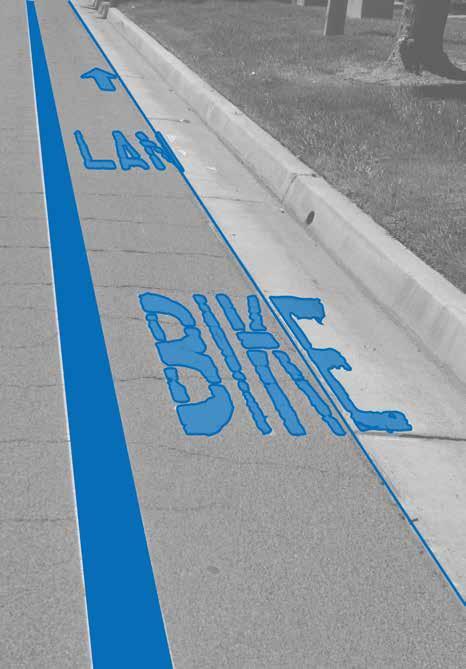
3 minute read
4.1 Barriers and Solutions Overview
There are several physical and institutional challenges that prevent safe walking and bicycling to transit throughout Omnitrans’ service area. Common situations include a lack of safe and comfortable sidewalks, crossings and bicycle facilities. In most cases, roadways and signal systems were designed to accommodate high volume, high speed vehicular traffic, without considering the needs of all roadway users.1
This chapter identifies some of the most common pedestrian and bicycle challenges and lists potential solutions that cities can apply to address them. This Plan recommends that all proposed improvements be implemented as a team partnership between Omnitrans, local jurisdictions and other partnering agencies or organizations. The lead agency for each project will depend on the project type and specific location.
Advertisement
4.1.1 Pedestrian Challenges In general, people walking or using a mobility device are at risk whenever they cross the roadway. However, these risks depend on the complexity of the vehicular and pedestrian traffic patterns and the effectiveness of supplementary information provided regarding the crossing location, direction, and duration.1 In addition to the physical design of roadways and intersections, the information available to people walking also has an impact on their safety. Complex crossings need to have accessible information about their location, direction, and duration. Physical or movement challenges are anything that restricts a person’s ability to physically move along the sidewalk and crosswalk environments. Common movement challenges for people walking include:
» Long crossing distances » Insufficient crossing time at signalized intersections » Medians and islands without ramps or cut throughs » Curb returns without curb ramps » Curb returns without level landing » Pedestrian actuated signal devices that are difficult to activate or reach » Lack of information during pedestrian signal phase » Excessive delay at signalized intersections » Lack of protected phases at pedestrian beacons
Safety for people walking can be improved by providing adequate access and mobility at intersections and crossings. Strategies that can help improve conditions for people walking include increasing crossing times, reducing crossing distances increasing visibility with curb extensions, installing curb ramps and pedestrian refuges, as well as clarifying areas with truncated domes and reducing traffic speed with traffic calming. Traffic and pedestrian signal devices that provide accessible information are also important to eliminate any information challenges.
Missing curb ramps Walking impediments
4.1.2 Bicycle Challenges Most bicyclists feel high levels of stress while riding on busy streets, which makes them less desirable and may discourage people from biking on them. Building safe and comfortable bicycle facilities is key to encouraging more bicycling and reducing the number of serious bicycling collisions and injuries. Traditionally, bicyclists have been seen as pedestrians, which has led to undesirable situations where bicyclists were being underserved by inadequate facilities. Many roadway designs, whether constructed decades ago or quite recently, have prioritized driver comfort and speed over pedestrian and bicyclist comfort and safety.2 Observed characteristics of disconnected networks for non-motorists included:
» Wide, multi-lane roads without high-quality bicycle facilities » Lack of marked crossings at intersections or midblock crossings » Gaps in sidewalks and bicycle facilities that create risk and limit ability for users to safely travel to and from destinations » Constrained rights-of-way preventing construction and development of bike facilities » Intersection designs that do not safely accommodate pedestrians and bicyclists, making it difficult to cross » Roadways with an excessive number of driveways

Creating a safer bicycling environment involves more than striping a bike lane or building a separated path. A safe bicycling network involves all aspects of safety, from signage and mapping that alerts riders to the level of skill necessary on a facility to the details of the design such as safe driveway treatments and bike friendly signal measures.
Cities that have adopted bicycle master plans can prioritize bicycle improvements to transit stations and bus stops to provide first and last mile connectivity. Their policies can improve bicycle accommodations to, at, and on buses and can improve levels of safety and reduce the number of safety by passengers.
Common bicycle challenges Faded pavement markings
Provision of inadequate bike lane width





